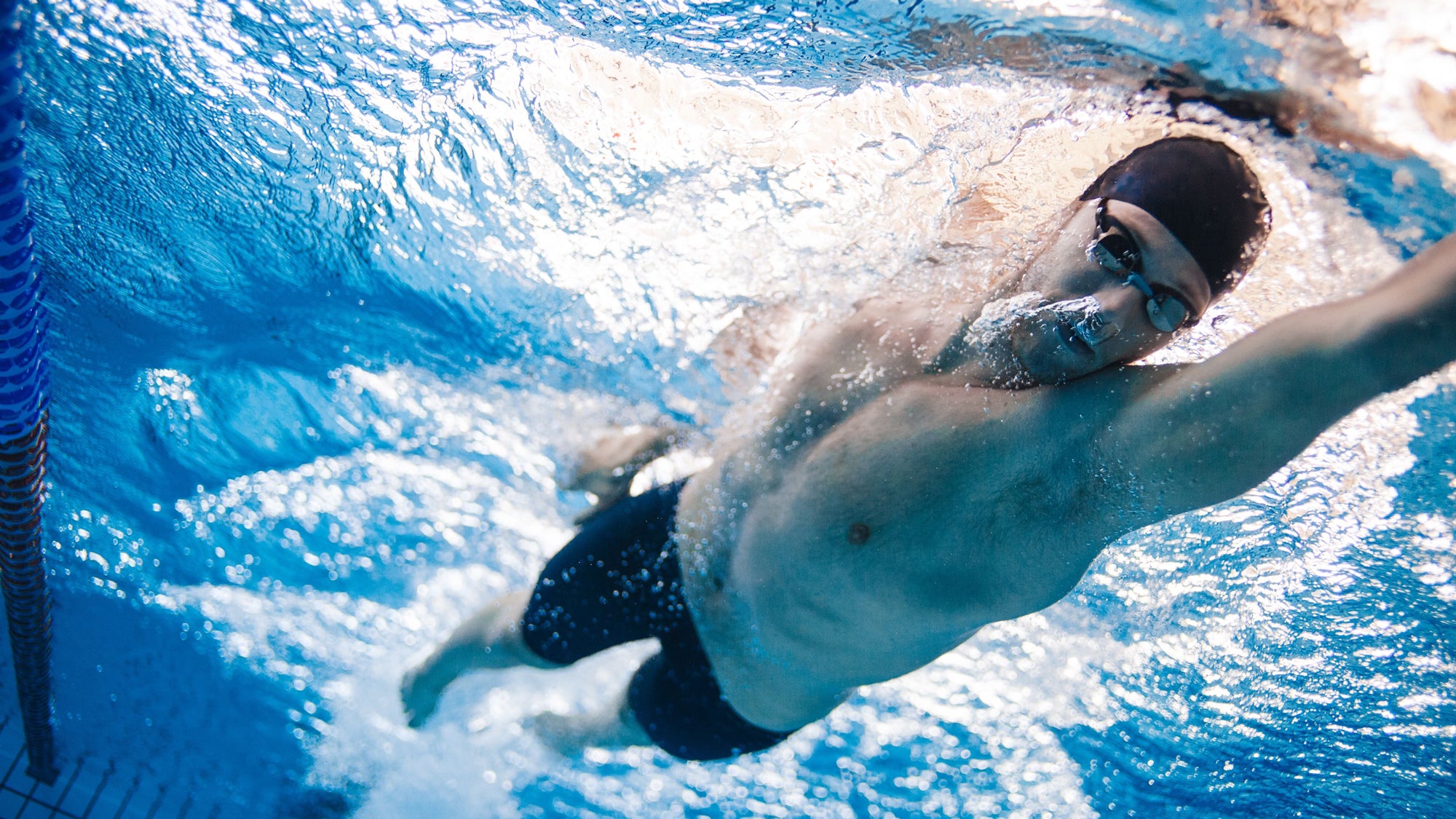One-Hour Workout: Pull and Build Swim

Triathletes of all ages and abilities can often struggle to listen to their bodies: If their plan says go hard, they go hard, irrespective of fatigue or stress—and when it’s time to go easy, they just might make it harder anyway. Jim Vance, coach to 2016 US Olympic triathlete Ben Kanute, says this can be one of the hardest things for endurance athletes to really figure out, and this is why it’s important for workouts to be flexible and include a range of intensities.
He says: “One of the best workouts for a triathlete, which is flexible and relevant in any training day or training cycle, is a swim workout that alternates pull and build efforts.”
The pull and build swim workout below features a warm-up of 300 easy followed by 6 x 50 as 25 fast, 25 easy, where you’re progressing effort throughout the 6 x 50. The main set involves 8 x 300, where the odd repeats are pull and the even repeats are build swim, which means every 300 swim should get progressively faster.
He says: “Pull efforts in the pool help recruit the right muscle groups and enhance your feel for the water, especially if using smaller paddles. Be careful with larger paddles: They increase the load on the shoulders and muscle groups, so smaller paddles are best if the goal of the workout is conservative efforts.
“Build efforts in the pool allow the athlete to set the peak of the intensity, and work into a rhythm with the water and their stroke, based on how they feel. Using build efforts after pulling helps coordinate movements better with the recruitment of more muscle fibers.
“If an athlete is tired, then the peak of the build should reflect an easy to moderate aerobic effort. If the athlete is feeling good, they can begin to raise the peak of the build efforts.”
Here are a few of Coach Jim’s key tips to remember for this pull and build swim:
- Pulling should be conservative in effort, the goal is to recruit and help build coordination.
- Every build effort should peak higher and faster than the build effort before it. This means your pull efforts should stay close to the same time each round, while your build efforts should descend to faster times each round.
- The peak of the build should reflect the goal of the session, and/or the goal of the training phase, (aerobic effort if easy or long course prep, high intensity if a race prep session).
- Rest and recovery on this is entirely up to the athlete, but in general your base interval should be a good guideline.
- Pull distance and build distance should always be equal to each other.
- This is a great workout for athletes to learn better pacing in the water.
Of course, you can make the pull and build intervals longer (or shorter) than 300, depending on your speed, fitness, and goals. If you are just starting back after a break then begin with 200, but if you’re in the final build for an Ironman race you might want to consider 500 or 600.
Here’s an example of this workout, using 300, for an athlete with a 1:30 aerobic base interval, which can be completed in an hour.
One-Hour Workout: Pull and Build Swim
Warm-up
Activation and dynamic movements on deck
300 easy swim
6 x 50 as 25 quick, 25 easy (with each one the 25 quick gets quicker)
Main Set
8 x 300
The odds (reps 1, 3, 5, 7) are pull and the evens (2, 4, 6, 8) are build swim. Each build should be faster than the build before it.
Cooldown
200 easy
Jim Vance is an author and triathlon coach for SuperFly Coaching, based in San Diego, California. He is the coach to 2016 US Olympic triathlete Ben Kanute. You can learn more from Jim at CoachVance.com.